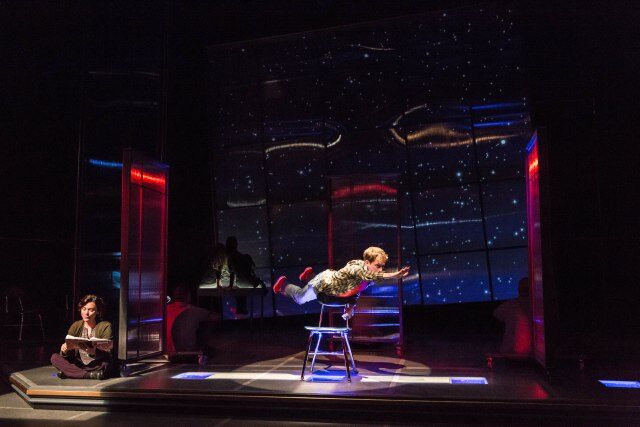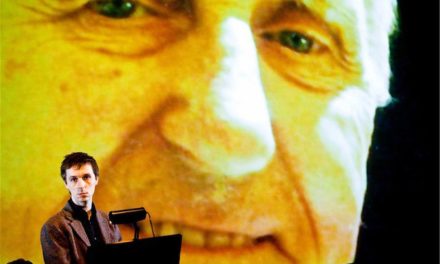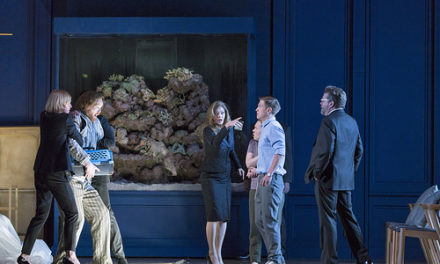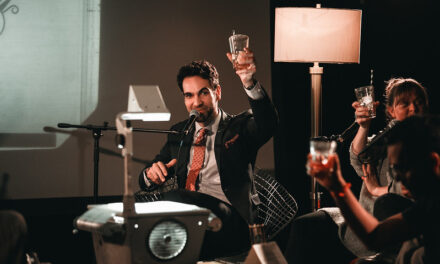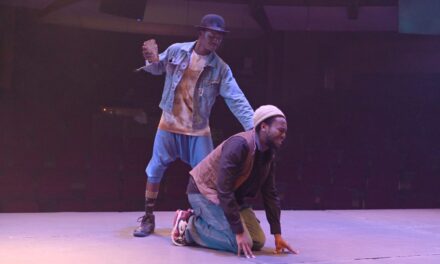A greater push for disability representation in the theatre industry has seen the emergence of disabled artists, playwrights, and technicians fighting for their right to be on stage and behind the scenes. While the diversity of disability must be included and prevalent in all theaters across the globe for true representation, it is also integral that disabled theater workers have a place they can figuratively call home, where they can get together and create theatre with each other, and by doing so, showcase their value as artists and workers.
One such place will be the new National Disability Theatre, artistically led by Talleri A. McRae and Mickey Rowe. The theatre will initially focus on teaming up with theatres and producing shows with a full cast and crew of disabled workers. They also have an advisory board made up of disabled actors and activists like Gregg Mozgala, Jaime Brewer, Micah Fowler, and more.
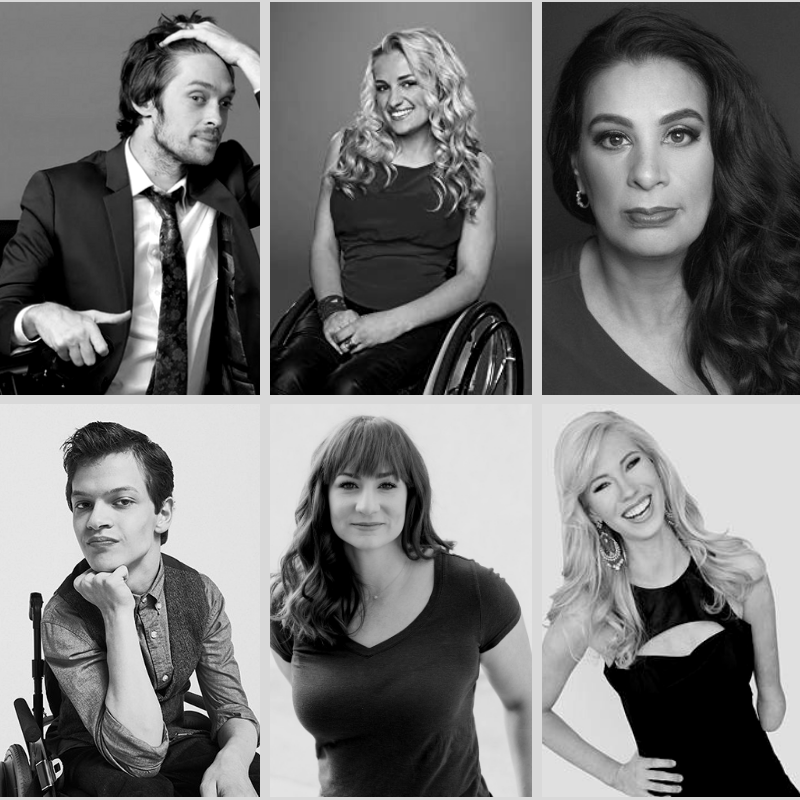
Some of the faces of National Disability Theatre | Photo Credits National Disability Theatre
The Theatre Times sat down with Mickey Rowe to discuss this exciting initiative and learn more about getting involved in the National Disability Theatre.
How has your previous training and expertise led to your decision to create the National Disability Theatre?
Why should there be a National Disability Theatre? The easy answer is, there shouldn’t have to be, but very few questions are easy. Being autistic and legally blind, growing up and through high school, I had no friends. I spent my lunch breaks and recesses pacing the hallways not knowing who to talk to, how to talk to them, or how to make a friend. I was completely alone in my own head. But my grandmother had a subscription to Seattle Children’s Theatre and when I was sitting in the dark theatre watching a show, I felt seen, I felt silently heard, and really sitting in that audience was the one time I felt understood.
Later I spent the entirety of my four years at the University of Washington trying to reach “neutral” as defined by my professors. Regardless of the acting exercise or the class, the only note I would ever get would essentially become more “neutral.” At the time I was working my butt off to try to hide my disability and not let anyone figure out that I was autistic. These constant notes that I could never be an actor unless I found a more traditional “neutral” really just felt to me as if they were saying, “We can tell something is different about you, and we don’t like it. You don’t fit into our narrow box of what makes an actor.” I believe that in theatre, our job is just to represent life in a safe and carefully crafted aesthetic. But if an actor breathes real life with an audience, it doesn’t matter how their mind or body looks, or moves, or works. You are a person, you are alive, and you are valued.
After that, working at large regional theatres, I saw how the diversity conversation always seemed to exclude disability. Even having conversations with leadership at large regional theatres, they genuinely didn’t seem to understand why disability would ever really be part of the diversity conversation. There was a huge disconnect that just now is finally starting to change.
During “Curious Incident,” which is such a physical show, I got to let all my differences shine. Instead of working to hide the tension in my hands and arms, I got to focus my attention on connecting with my scene partners, listening, and being present through that 2+ hour adventure of a story.
Across the country, many theatres today are working to become accessible for certain disabled audience groups – and while every so often the mainstream production will hire one or two people with disabilities, we feel this country needs a shining light to show that this isn’t enough and that we can easily be more inclusive. We know this because 95% of disabled roles are currently played by non-disabled actors according, to a study by the Ruderman Family Foundation. We proudly acknowledge incredible work is being done in isolated pockets by small companies such as Phamaly Theatre Company in Denver, CO. We hope to elevate the work to a mainstream and national scale while unifying the disability community as a united front.
Getting to keynote for arts leaders this year at the Lincoln Center and at the Kennedy Center showed me that there really is a need for this kind of leadership right now.
Moving forward, it is my goal to make sure that every person who steps through our doors feels seen, heard, and understood. Feels taken care of. It’s my goal that everyone who reads about National Disability Theatre or watches videos of our work feels seen and understood as well.
Why National Disability Theatre now? Because we need hope. Because we need empathy.
How can potential actors and technicians with disabilities get involved? How can those with disabilities that cause them to be unable to be physically present be a part of this initiative?
Absolutely! This is a great question! People can get involved by filling out the form on our website. If the form in inaccessible to anyone or they would like another way to contact us, they can also send us an email at contact@nationaldisabilitytheatre.org. We hope to film as many performances as we are able to and have live viewing parties on social media so that those with disabilities that cause them to be unable to be physically present can still be a valued part of our events! We also realize we don’t know everything, and we know that we will make mistakes because everyone at times makes mistakes. And we value the voices around us. If there is ever anything we can do to become more inclusive to you, or someone you know, please don’t hesitate to reach out and let us know what we could be doing better. It is an honor to get to listen, learn and grow, and we so appreciate other’s input into what we could be doing to be more accessible and welcoming to them. We look forward to hearing from you.
Each performance will be fully accessible with open captioning, active listening systems, interpreters, audio description, and more. Access will continue after each performance ends, as the audience is welcomed to engage with costume pieces and props that may be touched on stage by anyone, including audience members with visual impairments and sensory-seeking neurodiverse individuals. All this programming will not be an “add-on” but will be built directly into the fabric of each production’s artistic design and aesthetic.
What are some goals you have at the onset of the launch of the National Disability Theatre? How about in 10 years?
Our current goals are to launch our first production at a major regional theatre or performing arts institution.
Looking towards the future we are so excited to commission play from playwrights with disabilities written specifically for our company.
Mentorships: We understand that because of our missions’ tension with the current perceptions of people with disabilities, our artistic vigor and virtuosity are even more vital than usual. Artistic vigor is vital to us accomplishing our mission, as other industries and cultural organizations will only want to follow our lead if what we create is truly exemplary. We ensure the highest artistic level and organizational fitness of National Disability Theatre by assembling artistic design teams which are made up of artists and artisans with disabilities who have amassed experience working at large professional theatres across the country. When appropriate, we pair these designers with diverse and less experienced mentees who also have disabilities to help this next generation gain the experience needed to create work with the highest level of professionalism with efficiency and constancy.
We also hope to create a handbook of best accessibility working practices that will detail our practices in creating a fully accessible environment, so that any other theatre, arts, or cultural organization can download our handbook and have some concrete things they can do to make them feel more confident tackling accessibility more holistically. Those are some of our current goals.
In what ways do you feel that the National Disability Theatre will change the theater landscape to fully include those with disabilities?
We hope to flip the paradigm of who’s voices belong where and who is valued.
We will partner with regional theatres and performing arts institutions around the country which will be mutually beneficial. National Disability Theatre will gain access to those theatres’ administrative infrastructure which will add to our organizational strength. Our partnering organizations will receive NDT’s diversity and programming as well as an in-depth working education of how to work with a whole spectrum of artists and audiences with disabilities.
We also hope to make disability inclusion so exciting and sexy aesthetically that others will want to make their organizations more inclusive and diverse. We want to make such exciting theatre that no one will ever again be able to deny the power of inclusion and authenticity in representation.
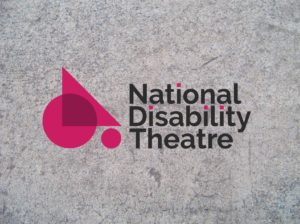
National Disability Theatre logo | Photo Credits National Disability Theatre
Twenty percent of the American population has a disability. This makes people with disabilities both the largest minority group in the United States and the least represented. Access not only affects this population’s ability to participate in arts and culture but also that of their spouses and families. That is a huge percentage of the American population that until now has not felt very comfortable or welcomed attending the arts. By presenting world-class theatre through a lens of disability culture, and representing disability in authentic and innovative ways, understanding of disability will transform not only for people with disabilities, but for their nondisabled families, friends, and co-workers as well.
The unemployment rate for people with disabilities is twice the national average of other protected groups. For many people with disabilities, their basic cost of living is dictated, without restriction, by the drug and health insurance industries. Over 50% of college graduates on the autism spectrum are unemployed.
People with disabilities aren’t less capable humans. But social stigma and negative perceptions of persons with disabilities make it harder to find work, make friends, and build community.
As you can see, the need is great, but we feel National Disability Theatre is uniquely positioned to bring forth exciting transformational change.
We also feel young people with disabilities in this country need positive role models who will tell them that if you are different, if you access the world differently, if you need special accommodations, then the world needs you! They will get to encounter many such role models at NDT.
This post was written by the author in their personal capacity.The opinions expressed in this article are the author’s own and do not reflect the view of The Theatre Times, their staff or collaborators.
This post was written by Madison Parrotta.
The views expressed here belong to the author and do not necessarily reflect our views and opinions.

